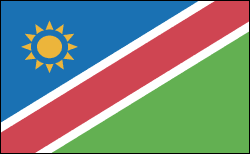Namibia News & Current Events


Installation of Namibian Government
South Africa handed over limited powers to a new multiracial administration in 1985 (the previous government had enforced South Africa's apartheid laws). Installation of this government ended South Africa's direct rule, but it retained an effective veto over the new government's decisions. Finally, in 1988 a South Africa agreed to a plan for independence. SWAPO leader Sam Nujoma was elected president, and on March 21, 1990, Namibia achieved nationhood.
Nujoma was reelected in 1994 and again in 1999, after the constitution was amended to allow him to seek a third term. Nujoma announced in Nov. 2001 that he would not seek reelection when his term expired in 2004. In Nov. 2004, Hifikepunye Pohamba of SWAPO was elected president with 76% of the vote. He took office on March 21, 2005, and was easily reelected in 2009, taking 75% of the vote.
In 2004, Germany issued a formal apology for the massacre of Herero by German colonial troops between 1904 and 1908.
In a 2012 cabinet reshuffle, Hage Geingob became prime minister, Netumbo Nandi-Ndaitwah foreign minister, Nahas Angula defense minister, and Pendukeni Iivula-Ithana home affairs minister. In 2014 presidential elections, Geingob won by an overwhelming 86.7% of the vote. His party, SWAPO, received 80% of the vote.
Geingob took office as president on March 21, 2015. He nominated Saara Kuugongelwa-Amadhila as prime minister. A member of the National Assembly of Namibia since 1995, Kuugongelwa-Amadhila also took office on March 21. She previously served as minister of finance from 2003 to 2015.
See also Encyclopedia: Namibia
U.S. State Dept. Country Notes: Namibia
Central Bureau of Statistics http://www.npc.gov.na/cbs/index.htm .







